
Wallendorfer Porcelain Manufactory - a manufacturer with a 250-year history
Wallendorfer Porcelain is produced at one of the oldest porcelain manufactories in Germany, located in the Thuringian town of Lichte. Unlike many well-known ceramic manufacturers of the 18th and 19th centuries, Wallendorfer porcelain is still produced to this day. The factory's leadership preserves traditions and keeps the ancient porcelain recipe a closely guarded secret. The range of the manufactory includes exquisite tableware and decorative items made from hard, biscuit, and bone china. The company's logo features a green or blue letter "W," the design of which has evolved over different periods. Since 2006, it has been accompanied by a crown and the year of the founding.
 Wallendorfer Porcelain. Sculpture of a ballerina tying pointe shoes, 1940s
Wallendorfer Porcelain. Sculpture of a ballerina tying pointe shoes, 1940s
 Wallendorfer Porcelain. Wallendorfer Manufactory stamp
Wallendorfer Porcelain. Wallendorfer Manufactory stamp
History of Wallendorfer Porcelain
The production of Wallendorfer Porcelain can be attributed to the wealthy entrepreneur Johann Wolfgang Hamann, who founded the enterprise in Thuringia. He joined forces with the Greiner family, who held the secrets of porcelain-making, and later invited the master craftsman Johann Georg Dümmler to participate. To commence production, Hamann applied for a license from the Duke of Saxe-Coburg in 1761, but the initial attempt was unsuccessful. His competitor, Heinrich Macheleid, managed to secure a similar document three days earlier.
 Wallendorfer Porcelain. Service by Johann Haag, 18th century
Wallendorfer Porcelain. Service by Johann Haag, 18th century
Nevertheless, Wallendorfer Porcelain eventually came into existence a few years later. Despite the initial setback, the entrepreneur continued his efforts and began building the factory. In 1764, he obtained the necessary license. In the 20th century, as the anniversary of the manufactory approached, a dispute arose regarding the establishment year. A special commission ruled that the illegal period should not be considered, and now the factory's signature mark displays the year 1764.
 Wallendorfer Porcelain. Saucer with floral pattern, late 18th century
Wallendorfer Porcelain. Saucer with floral pattern, late 18th century
For the first 15 years, the porcelain was not uniform and had a grayish hue due to the local raw materials' characteristics. From 1780 onwards, the factory transitioned to Czech kaolin. One expert wrote that, after this change, Wallendorfer Porcelain became bright white, pure, and so hard that sparks would fly when rubbed against steel. The quality was so high that for a time, the factory passed off its tableware as the renowned Meissen manufactory's products.
 Wallendorfer Porcelain. Plate, late 18th century
Wallendorfer Porcelain. Plate, late 18th century
The Hamann family owned the factory until 1833, producing highly regarded porcelain items throughout Europe. The factory changed hands numerous times thereafter. The company Kampf & Heubach AG played a significant role in its history, focusing on the production of decorative figurines. These figurines were in high demand, but World War I led to the closure of the enterprise.
 Wallendorfer Porcelain. Ballerina figurine
Wallendorfer Porcelain. Ballerina figurine
The next owner was the Fraureuth porcelain factory, which went bankrupt in 1926. Its artistic director, Heinz Schaubach, managed to acquire the molds and equipment. Along with other former employees, he founded the Schaubach Kunst enterprise. Its tableware, vases, decorative plates, and figurines are known worldwide. Production came to a halt during World War II, and in 1953, it was expropriated by the GDR government, significantly reducing the range of products.
 Wallendorfer Porcelain. Teapot, first half of the 20th century
Wallendorfer Porcelain. Teapot, first half of the 20th century
In the 1970s, the management decided to resume the production of items that had brought the manufactory fame in the past. During the war years, many documents and molds were lost, so tableware and figurines were recreated based on samples from museum and private collections.
 Wallendorfer Porcelain. Ballerina figurine with mirror, 1970-1980
Wallendorfer Porcelain. Ballerina figurine with mirror, 1970-1980
Currently, Wallendorfer porcelain, like in the past, is hand-painted. Bone china production started in 2006. Antique products from the manufactory are exhibited in the Hermitage, the British Museum, the Metropolitan Museum of Art in New York, and other major collections around the world.
 Wallendorfer Porcelain. Teapot and creamer, late 18th century, from the Hermitage collection
Wallendorfer Porcelain. Teapot and creamer, late 18th century, from the Hermitage collection
What is Wallendorfer porcelain known for?
Since its establishment, the manufactory has been producing exquisite tea, coffee, and chocolate tableware. Twenty years later, decorative figurines were added to the assortment. These directions remain the leading ones in production. Here are some well-known examples of Wallendorfer porcelain:
- "East Frisian Rose." This series features a distinctive floral pattern typical of East Frisia. The region is known for its tea-drinking traditions.
- "Blue Drezmer." The service is produced using traditional techniques and hand-painted. It is also available in red.
- "Bianca Hamann." This design was created in 1820 by an artist who was the factory owner's niece. At the time, the service was called "Grape Leaves," and it now bears the author's name.
- "Alt Wallendorf." This elegant series has been in production since 1989, introduced for the manufactory's 225th anniversary.
- Hand-painted white and figurines. The sculpture from this factory is characterized by its grace and elegance. Ballet dancers and animals are particularly popular.
 Wallendorfer Porcelain. Oriental-Friesian Rose service set
Wallendorfer Porcelain. Oriental-Friesian Rose service set
 Wallendorfer Porcelain. Blue Dresmer Series
Wallendorfer Porcelain. Blue Dresmer Series
 Wallendorfer Porcelain. Alt Wallendorf and Bianca Hamann sets
Wallendorfer Porcelain. Alt Wallendorf and Bianca Hamann sets
 Wallendorfer Porcelain. Statuette Running Horses, 1963-1990
Wallendorfer Porcelain. Statuette Running Horses, 1963-1990
Buying Wallendorfer Porcelain
Wallendorfer porcelain is not as famous as Meissen or Nymphenburg, but it is equally renowned for its quality and beauty. Products from this manufactory are highly valued in the antique market. Sculptures, vases, and tableware from the 19th and 20th centuries are quite commonly available for sale. Wallendorfer porcelain will adorn any collection.
 Wallendorfer Porcelain. Decorative porcelain vases
Wallendorfer Porcelain. Decorative porcelain vases
The Very Important Lot website offers a convenient opportunity to purchase German porcelain and other antique treasures online. There is no need to spend time searching in small shops or flea markets. On our portal, thematic auctions are regularly held, and anyone interested can participate.
 Wallendorfer Porcelain. Figurine Nude Girl on Horseback
Wallendorfer Porcelain. Figurine Nude Girl on Horseback
You can buy artistic porcelain and other works of art at auctions without leaving your home. And most importantly, you have a vast selection to choose from, including items from different countries and eras. Don't miss out on new auctions and treat yourself to valuable discoveries!
 Claude Monet: biography, artwork, best paintings of the French Impressionist artist
Claude Monet: biography, artwork, best paintings of the French Impressionist artist 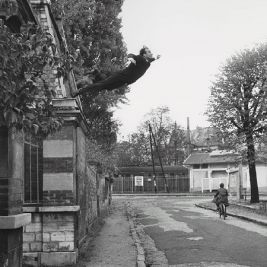 Performance art - provocative art with profound meaning
Performance art - provocative art with profound meaning  Texture in Typography: Revitalizing Design with Tactile Sensations
Texture in Typography: Revitalizing Design with Tactile Sensations  Sandro Botticelli: Biography, Artistic Career, and the Best Paintings of the Artist
Sandro Botticelli: Biography, Artistic Career, and the Best Paintings of the Artist 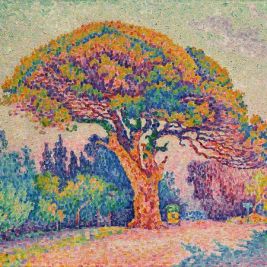 Post-Impressionism is a joyful and unconventional style in painting
Post-Impressionism is a joyful and unconventional style in painting 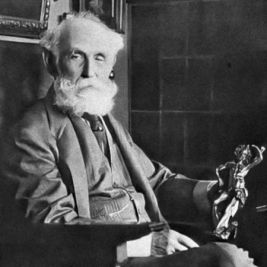 Albert Figdor Collection: Sweets for the ladies. Cigars for the gentlemen
Albert Figdor Collection: Sweets for the ladies. Cigars for the gentlemen 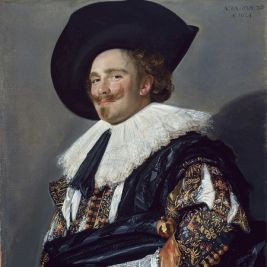 Portrait - a genre of painting: essence, types, history of the genre, famous portraits and portrait artists
Portrait - a genre of painting: essence, types, history of the genre, famous portraits and portrait artists  Symbolism: the essence of the term, history in painting, distinctive features, famous symbolists
Symbolism: the essence of the term, history in painting, distinctive features, famous symbolists  Chaim Soutine - an unsurpassed master of expression
Chaim Soutine - an unsurpassed master of expression 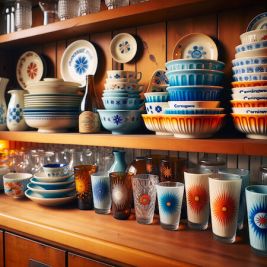 The Resurgence of Vintage Kitchen and Barware: A Collector’s Delight
The Resurgence of Vintage Kitchen and Barware: A Collector’s Delight